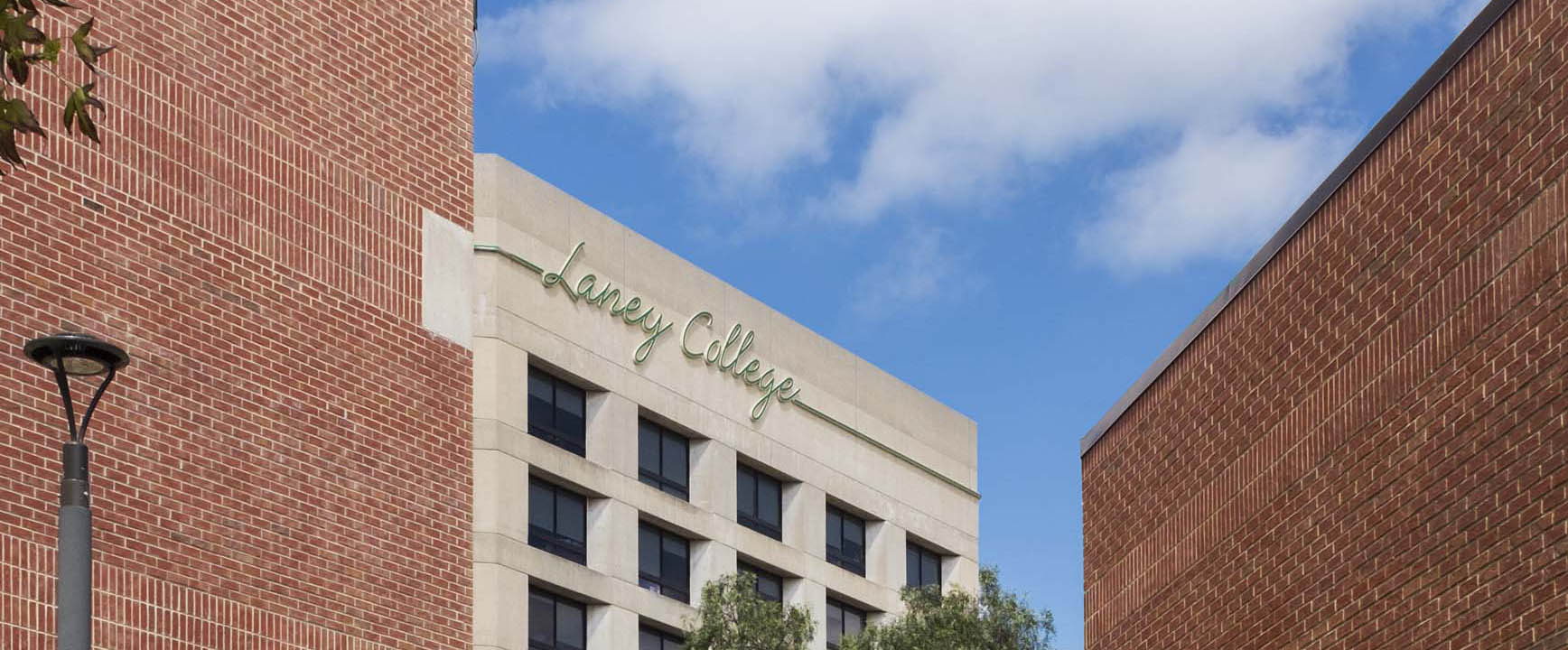The Laney ECT lab is an ideal environment to get hands-on experience in state-of-the-art residential, light commercial and commercial HVAC systems.
Commercial HVAC Lab
The 8,000 square foot Environmental Control Technology (ECT) Lab holds a full size commercial hydronic system consisting of all major components, including boiler, chiller, heat exchangers, cooling tower, variable frequency drives (VFDs), variable air volume boxes (VAV), economizers, sensors, and controls. The hydronic lab was designed by Taylor Engineering, one of the leading engineering firms for energy efficiency in the country. The lab allows instructors to simulate a variety of real-life problem scenarios, to install temporary faults and bugs, and to have students solve complex problems as a team.
Multi-vendor Building Controls Lab
With current NSF renewal funding Educating Technicians for Building Automation and Sustainability, Laney is installing a multi-vendor control system in its commercial HVAC lab. The latest devices on the market will operate in unison to support HVAC training equipment in the lab. The different systems will be fully integrated through an interoperable network, simulating the latest trend in building automation. Read more about the multi-vendor control systems lab.
At our multi-vendor Direct Digital Controls (DDC) test-bench lab students practice controls wiring, programming, and systems integration strategies.
Computer Lab, Classroom, and Workbenches
A 28-station computer lab is available to ECT students only, outfitted with instructional software, including LearnHVAC, Write Soft, Trane software, Simutec, (a refrigeration and HVAC simulation tool), and AutomatedLogic Web Control.
The facility also contains an array of workbenches and trainers, including refrigeration trainers, refrigerators and freezers for teaching commercial refrigeration troubleshooting, light commercial/residential HVAC trainers, Variable Air Volumes (VAV), and trainers for teaching compressor tear-down, brazing, soldering, and bending, basic motors and controls, ignition systems, and pneumatic and electromechanical controls.
In addition, Laney’s 5,500 square foot Electrical Department provides 10 work stations for teaching variable frequency drives, motors, and controls.
Problem-Based Case Studies and HVAC Simulation Software
ECT faculty members have been working with a curriculum design consultant to develop problem-based teaching modules (PBL) on real-life HVAC and controls troubleshooting scenarios in buildings. Read more about PBL.
In addition, a “flight” simulator software for commercial HVAC systems, called Learn HVAC (formerly ePrimer), was developed by the Institute for the Institute for the Sustainable Performance of Buildings (SuperB) in collaboration with Lawrence Berkeley National Lab. The software allows students to understand and troubleshoot typical scenarios in commercial building operation and to visualize highly complex component and system interactions in a building.
In addition, ECT faculty members are working with a curriculum design consultant to develop problem-based teaching modules on real-life HVAC and controls troubleshooting scenarios in buildings.





